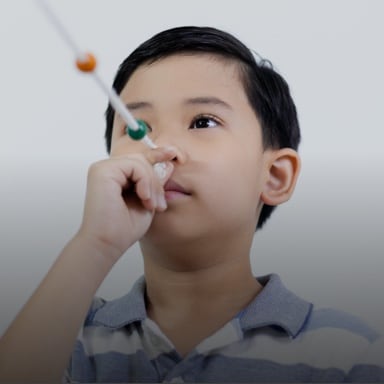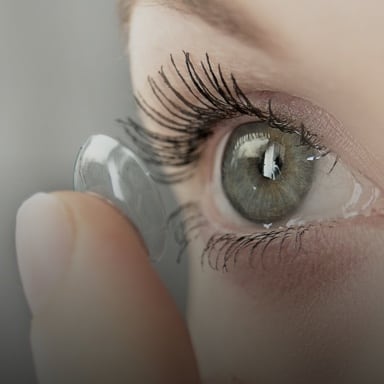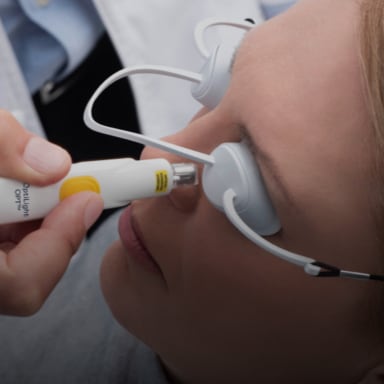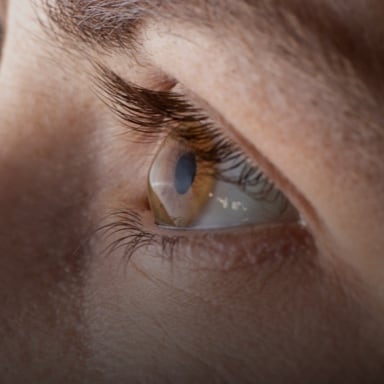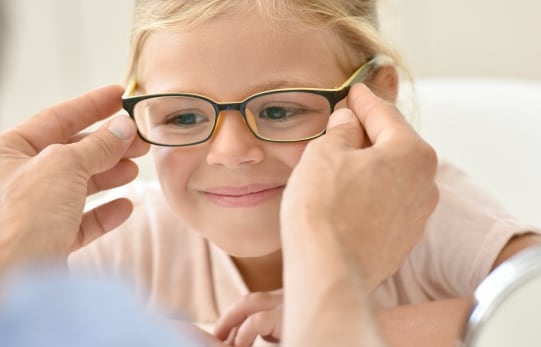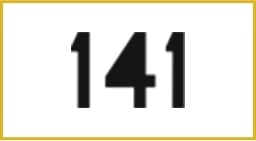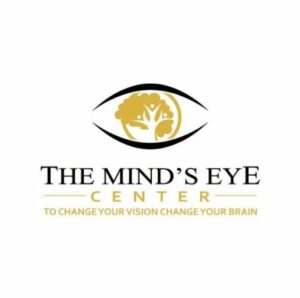
We are happy to be partnered with The Mind’s Eye Center.
The Mind’s Eye Center employs both traditional methods and cutting-edge technology, to treat visual deficiencies such as amblyopia, strabismus, brain injuries, and neurodegenerative diseases, as well as enhancing sports vision. Our advanced optometric vision therapy goes beyond standard orthoptics, focusing on the collaboration between the eyes and the brain, and is tailored to each individual’s needs—similar to physical therapy but with a cognitive component. Our comprehensive approach includes therapeutic lenses, prisms, perceptual games, advanced 3D technology, occlusion and filters, balance boards, sensory integration technology, and specialized vision therapy software. Our virtual reality program is designed specifically by optometrists for these conditions, for a more interactive and immersive experience.
The Mind’s Eye Center
Specialty Eye works closely with The Minds Eye Center, which provides individualized vision therapy programs to best address the specific visual dysfunction and goals of adults and children.
Technology
The Mind’s Eye Center utilizes time-tested tools and the newest technology. Virtual reality has successfully treated adults and children with deficient visual skills, amblyopia, strabismus, brain injury, and neurodegenerative diseases, and also provides sports visual enhancement training.
- We use vision therapy activities in Virtual Reality platform (Vivid Vision) during office sessions and prescribe for increased therapeutic impact at home.
- Research and clinical experience continues to show this to be a powerful tool toward visual learning and gains for patients.
Optometric Tools
- Therapeutic Lenses
- Prisms
- Perceptual learning procedures
- Many different types of 3D and 3D technology
- Different types of occlusion and filters
- Balance boards
- Electronic targets and touchscreens with timing mechanisms
- Vision therapy software
- Vision therapy activities in Virtual Reality platform (Vivid Vision)
- Many other special tools designed for specific eye-brain learning
Advanced Vision Therapy Vs. Eye Exercises
Advanced vision therapy is more than what many ophthalmologists would define as orthoptics. The treatments used during optometric vision therapy go beyond the limited definition and scope of orthoptics to treat disorders of the visual system, indicative of vision as a collaboration between the eyes and the brain.
This is why it is so important to understand that optometric vision therapy is different from self-help “eye exercises”. Optometric vision therapy is like physical therapy for the eyes, but with a cognitive or thinking component. Because of the complexity of the visual system, we design individually prescribed therapy plans to address each person’s visual needs.

What Is Vision Therapy?
The foundation of vision therapy lies in neuroplasticity. The ability to rewire and retrain the brain and build new neural pathways is what makes optometric rehabilitation possible.
Through vision therapy exercises, we can build new neural pathways to improve visual skills and functions.
The Mind’s Eye Center offers a comprehensive range of vision therapy services, including:
- Vision Therapy: Personalized programs based on your visual challenges and goals.
- Visual Perceptual Testing: This assessment helps identify weaknesses in visual processing skills that can impact reading, learning, and visual-motor coordination.
- Virtual Reality Testing: Engaging and interactive therapy programs designed to help improve visual skills in a fun and motivating environment.
- Primitive Reflex Testing & Integration: Primitive reflexes are involuntary movements present in infancy that help with development. Incomplete integration of these reflexes can sometimes impact vision and learning, affecting eye teaming, balance, and spatial awareness.
- Optometric Light Therapy: A treatment utilizing specific light wavelengths to address visual processing issues and visual discomfort.
Common Problems That Vision Therapy Can Help Solve
Not everyone who needs vision correction requires glasses or contacts. Sometimes, the issue lies in how the eyes work together or how the brain interprets visual information. Vision therapy can address a variety of problems that might be impacting your daily life.
If you’re experiencing any of these problems or suspect you’re experiencing a vision issue that glasses or contacts haven’t fully addressed, our team at Specialty Eye can help. We’ll conduct a comprehensive eye exam to assess your needs and determine if vision therapy is the right course of action for you.
Conditions We Can Manage
Vision therapy can be beneficial for a wide range of people experiencing vision problems. Vision therapy programs can help people manage, and in some cases, overcome the effects of:
-
- Convergence insufficiency
-
- Amblyopia (lazy eye)
-
- Strabismus (poor eye alignment)
-
- Acquired brain injury, traumatic brain injury, and concussion symptoms
-
- Neurodegenerative diseases
-
- Visual field loss
-
- Stroke symptoms
Symptoms to Look Out for
Some of the specific issues and symptoms that can be addressed with vision therapy include:
-
- Difficulty copying from the board
-
- Headaches and eye strain
-
- Kids tilting their head while reading
-
- Closing one eye while reading
-
- Skipping words or lines while reading
-
- Avoiding activities that require near vision
-
- Motion discomfort while reading
-
- Car sickness
-
- Clumsiness, including frequently bumping into things or knocking things over
-
- Visual perceptual problems
-
- Kids holding reading materials too close to their face
-
- Burning, irritated, or watery eyes
-
- Kids being misunderstood as lazy or slow learners
-
- Kids being misdiagnosed with ADHD or a behavioral problem
Focusing Difficulties
-
- Blurry vision at near or far distances
-
- Eye strain and headaches, especially after reading or screen time
-
- Difficulty concentrating on reading tasks
-
- Skipping lines or losing your place while reading
Eye Teaming Issues
-
- Double vision or ghosting of images
-
- Difficulty judging depth perception, leading to problems with walking on stairs or catching objects
-
- Poor hand-eye coordination, affecting sports performance or daily activities
Tracking Problems
-
- Difficulty following moving objects, causing problems with reading or tracking a ball during sports
-
- Loss of place while reading
Visual Processing Problems
-
- Difficulty recognizing letters or words (not related to dyslexia)
-
- Poor visual memory or spatial awareness
-
- Problems with visual discrimination, making it hard to differentiate similar objects



The Vision Therapy Process
- Comprehensive Evaluation: Schedule a 2-part evaluation with our doctors at Specialty Eye. This evaluation will assess your vision and includes a complete eye exam and other tests that help identify and pinpoint underlying visual processing issues.
- Personalized Treatment Plan: Based on the evaluation results, we will design a customized vision therapy program tailored to your specific needs. Treatment plans typically last 3, 6, 9, or 12 months, depending on the complexity of the visual problem.
- Weekly Therapy Sessions: You’ll have weekly vision therapy appointments lasting 45 minutes each. We offer evening appointments for added convenience and virtual appointments to help make therapy accessible regardless of location.
- Engaging Activities: Your therapy program will incorporate fun games and home activities to reinforce the skills learned in sessions. These activities will be tailored to your specific needs and preferences, making vision therapy a more interactive and enjoyable experience.
- Progress Monitoring: Regular progress evaluations with the overseeing doctor will be scheduled every 10–12 weeks to track improvement and ensure the therapy program remains effective.
- Post-Program Care: Following program completion, you’ll return for a follow-up appointment 3 months later to monitor your visual functioning and help you reach and maintain long-term success. This helps to solidify the improvements gained through vision therapy and prevent regression.
Vision Therapy Resources
Are you interested in our vision therapy program? Check your symptoms to see if vision therapy may benefit you, or take our brain injury symptom survey.
Learn More
The COVD Website is an excellent place to learn more about vision problems, optometric vision therapy, and read research. More of our favorite resources include:
- The Scientific Basis for and Efficacy of Optometric Vision Therapy in Nonstrabismic Accommodative and Vergence Disorders.
- Correlation Between Asthenopic Symptoms and Different Measurements of Convergence and Reading Comprehension and Saccadic Fixation Eye Movements.
- Binocular Vision and the Stroop Test.
- Effect of Oculomotor and Other Visual Skills on Reading Performance: A Literature Review.
- The Relation of Clinical Saccadic Eye Movement Testing to Reading in Kindergartners and First Graders.
- The Impact of Vergence and Accommodative Therapy on Reading Eye Movements and Reading Speed.
- Correlation of Magnocellular Function with Measurements of Reading in Children.
- Vision and Reading Deficits in Post-Concussion Patients: A Retrospective Analysis.
- Academic Behaviors in Children with Convergence Insufficiency with and without Parent-Reported ADHD.
- Treatment of Convergence Insufficiency in Childhood: A Current Perspective.
- Randomized Clinical Trial of Treatments for Symptomatic Convergence Insufficiency in Children.
- Vision Therapy/ Orthoptics for Symptomatic Convergence Insufficiency in Children: Treatment Kinetics.
- Randomized Clinical Trial of Vision Therapy/Orthoptics versus Pencil Pushups for the Treatment of Convergence Insufficiency in Young Adults.
- Oculomotor Dysfunctions, Their Remediation, and Reading-Related Problems in Mild Traumatic Brain Injury.
- Effectiveness of Vision Therapy in School Children with Symptomatic Convergence Insufficiency.
- Efficacy of Vision Therapy in Children with Learning Disability and Associated Binocular Vision Anomalies.
- Vision Therapy in Adults with Convergence Insufficiency: Clinical and Functional Magnetic Resonance Imaging Measures.
- Visual and Binocular Status in Elementary School Children With a Reading Problem.
- Accommodative Function in School Children with Reading Difficulties.
- Treatment of Accommodative Dysfunction in Children: Results from a Randomized Clinical Trial.
- Accommodative Insufficiency Is the Primary Source of Symptoms in Children Diagnosed With Convergence Insufficiency.
- Research Update on Visually-Based Reading Disability

FAQs
Do you have questions about vision therapy? Have a look at our FAQs below to help find some answers to common questions. If you don’t see the answer you are looking for, get in touch with our helpful vision therapy team.
What Is Optometric Vision Therapy (VT)?
- Optometric Vision Therapy is the science of developing visual abilities to achieve optimal visual performance and comfort.
- A doctor-prescribed a program of progressive vision procedures designed for high-level learning in the visual system (brain and eyes).
- Performed under the supervision of a specially trained optometrist.
- The goal is to help patients apply their newly developed visual skills and perception to real life.
- Optometric vision therapy is not a specific set of eye exercises and is not simply orthoptics (see below)
What Is VT Like At Mind’s Eye Center?
- We provide advanced evidence-based vision therapy based on the principles of neuroscience.
- Individualized for each patient’s needs, diagnoses, and goals.
- The doctor-therapist team plan visual activities that create brain changes.
- One-on-one office sessions with highly trained optometric vision therapists.
- Interactive in-office sessions once or twice weekly for 45 minutes.
- Utilizes technology, 3D, virtual reality (Vivid Vision), and real space activities.
What Tools Are Used In Optometric Vision Therapy?
- Therapeutic Lenses
- Prisms
- Perceptual learning procedures
- Many different types of 3D technology
- Different types of occlusion and filters
- Balance boards
- Electronic targets and touchscreens with timing mechanisms
- Vision therapy software
- Vision therapy activities in a virtual reality platform (Vivid Vision)
- Many other special tools designed for specific eye-brain learning
Does Mind’s Eye Center Use Virtual Reality?
- Yes! We use vision therapy activities in a virtual reality platform (Vivid Vision) during office sessions and prescribe other activities for increased therapeutic impact at home.
- Research and clinical experience continue to show this to be a powerful tool toward visual learning and gains for patients.
What Are The Goals Of Optometric Vision Therapy?
- Help patients develop or improve foundational visual skills (eye movements, eye focusing, eye teaming) used in every area of life.
- Improve visual comfort, effectiveness, and efficiency for everyday activities, academics, work, or sports.
- Improve visually guided gross and fine motor abilities (eye-hand, eye-foot, eye-body).
- Enhance the brain’s ability to control eye alignment, decrease suppression, and improve coordination of the two eyes as a team.
- Enhance visual perceptual abilities, memory, and visual attention.
- Our ultimate goal is to design the vision therapy activities to guide learning in the visual system toward treating the diagnoses and meeting patient goals.
Is Vision Therapy Different Than Eye Exercises?
A publication by the American Optometric Association on Vision as a Collaboration Between Eyes and Brain, co-authored by Dr. Press, concluded: “Information from neuroimaging and insights from cognitive neuroscience demand a significant reformulation of the understanding of vision. Vision occurs neither in the eyes nor in the brain but emerges from the collaboration of the eyes and the rest of the brain. Vision is a pervasive aspect of our existence which permeates all of our activities. Vision develops and, due to neural plasticity, can be enhanced.”
This is why it is so important to understand that optometric vision therapy is different from self-help “eye exercises.” Optometric vision therapy is like physical therapy for the eyes, but with a cognitive or thinking component. Because of the complexity of the visual system, we design individually prescribed therapy plans to address each person’s visual needs.
What Is Advanced Vision Therapy?
Advanced vision therapy is more than what many ophthalmologists would define as orthoptics. The treatments used during optometric vision therapy go beyond the limited definition and scope of orthoptics to treat disorders of the visual system, indicative of vision as a collaboration between the eyes and the brain.
What Types Of Visual Problems Are Treated?
The Mind’s Eye Center provides advanced vision therapy based on the principles of neuroscience. We provide treatment for developmental visual problems, vision-related learning problems, visual-motor deficiencies, and perceptual-cognitive deficiencies, and provide visual rehabilitation after acquired brain injury, and visual enhancement training for sport.
Optometric vision therapy is the link that connects the brain to clear eyesight. Eyesight that is 20/20 is not always enough to function well in the activities of daily living, hobbies, school, work, or sports. Sight is not the same as vision. “Eyesight” is a physical process of focusing light within our eyes, whereas “vision” involves our eye-brain ability to derive meaning and make appropriate action based on what is seen. Vision is involved in learning, memory, thinking, executive functions, and attention.
Vision therapy sessions include procedures designed to enhance the brain’s ability to control:
- Eye alignment
- Eye movements and tracking
- Eye teaming
- Eye focusing
- Visual perceptual and cognitive abilities
- Visual attention and memory
Why Wasn’t Vision Therapy Recommended by the Pediatrician or Ophthalmologist?
It is important to understand why there can be disagreement when comparing the recommendations of optometrists specially trained in vision therapy and other eye doctors or pediatricians. Pediatricians screen for eye problems—and many ophthalmologists and optometrists only examine eye health and eyesight. If they determine that there are no abnormalities with the eye, that’s the end of the discussion. The eyes are fine, therefore there’s no need for vision therapy. This is a shortsighted approach when you consider that vision occurs beyond the eyes.
Simply put, the need for brain-based (neurolearning) vision therapy for patients with conditions such as autism spectrum, ADHD, reading problems, or brain injury has nothing to do with whether eyesight is 20/20 or the eyes are healthy.
This is why it is so important to understand that optometric vision therapy is different from self-help “eye exercises.” Optometric vision therapy is like physical therapy for the eyes, but with a cognitive or thinking component. Because of the complexity of the visual system, we design individually prescribed therapy plans to address each person’s visual needs.
What Is the Vision Therapy Program Like?
At The Mind’s Eye Center, Vision Therapy is individually designed for each patient’s needs. The doctor-therapist team design the program based on each patient’s diagnoses, symptoms, visual deficiencies, and their effect on optimal work, school, sport, or hobby performance with each patient’s individual needs and goals in mind.
A therapy program includes weekly or twice weekly office visits working one-on-one with a highly trained Optometric Vision Therapist. The doctor prescribes the therapy and the Dr.-therapist team plans visual activities that create brain changes. The vision therapist is highly trained to coach each patient to achieve high-level learning. Research shows this type of program to be the most successful in addressing patient symptoms and goals and changing brain-eye connections. Visual activities may be prescribed to practice at home for additional reinforcement and learning.
Regular progress evaluations are scheduled with the doctor to monitor each patient’s progress, goals, and symptoms, and to best individualize the activities. After a patient completes their vision therapy program, the patient is monitored with post-therapy evaluations with one of the specialty doctors.
Why Is Our Vision Therapy Successful?
High-level specialty training and continual learning
The Mind’s Eye Center provides advanced evidence-based vision therapy based on the principles of neuroscience. The doctors are residency trained in this specialty and continually pursue post-doctorate continuing education at the highest level in their specialty. The doctors and the optometric vision therapists are continually involved with training, education, teaching, and collaboration in areas of visual development, learning, vision and neuroscience, attention and memory, acquired and traumatic brain injury, and neurodegenerative diseases such as Parkinson’s disease.
Scientifically proven methodology and genuine care for each patient
There is no procedure or instrument that makes a patient better – it is what the patient learns from the procedure. The doctor-therapist team creates opportunities for learning during the visual activities. The patient must transfer this learning to their daily lives. When they do, we see reduced symptoms and improved quality of life. We accomplish this by using 5 keys (Socratic Method, Learning Theory, Specific Praise, Motivation, and Loading), which have been scientifically proven to be very effective methods of neurolearning and treatment in vision therapy.
Collaboration with other professionals
Our doctors and optometric vision therapists collaborate with other professionals for the best care and co-management of our patients.
Sharing our passion and expertise
Our doctors have a high commitment to teaching and providing continuing education for eye care physicians, medical physicians, neurologists, occupational therapists, physical therapists, and speech-language therapists. Our doctors also regularly volunteer their time and expertise in the community as well as worldwide. Some of these avenues are Optometric Physicians of Washington, Children’s Task Force, InfantSEE Committee, volunteering and educating school nurses, teachers, and education professionals, teaching at Evergreen Health parent-baby classes, and providing eye health and vision care to the underserved in our community and world.
Does Optometric Vision Therapy Really Work?
Yes!
How do we know?
- Real lives are changed
- Scientific research in many professional areas is utilized in the treatments and methodology of optometric vision therapy.
- Some of these areas include vision, perception, neuroplasticity, physiology, cognitive science, learning, education, psychology, neuroscience, and biology.
Follow Us
Our Locations
Specialty Eye Bellevue
Steps away from beautiful Bellevue Square Mall, our office is conveniently located just off the I-405 on 106 Avenue NE.
- 225 106 Ave. NE
- Bellevue, WA 98004
Hours of Operation
- Monday: 10:00 AM – 6:00 PM
- Tuesday: 9:00 AM – 5:00 PM
- Wednesday: 9:00 AM – 5:00 PM
- Thursday: Closed
- Friday: 9:00 AM – 5:00 PM
- Saturday: Closed
- Sunday: Closed
Specialty Eye Kirkland
Next to the Evergreen Hospital, our convenient location is on NE 128 Street, just off the I-405.
- 11830 NE 128 St., Suite 1
- Kirkland, WA 98034
Hours of Operation
- Monday: 9:00 AM – 5:00 PM
- Tuesday: 9:00 AM – 5:00 PM
- Wednesday: 9:00 AM – 5:00 PM
- Thursday: 9:00 AM – 5:00 PM
- Friday: 9:30 AM – 5:00 PM
- Saturday: Closed
- Sunday: Closed
The Mind’s Eye Center
You can find us on 122nd Avenue, located in the Jonesco Business Center, with plenty of parking available.
- 8750 122nd Ave NE
- Kirkland, WA 98033
Hours of Operation
- Monday: 9:00 AM – 6:30 PM
- Tuesday: 9:00 AM – 6:30 PM
- Wednesday: 9:00 AM – 6:30 PM
- Thursday: 9:00 AM – 6:30 PM
- Friday: 9:00 AM – 6:30 PM
- Saturday: Closed
- Sunday: Closed
Our Specialty Eye Care

See What People Say About Us
“All the associates here are wonderful! Everyone is thoughtful and accommodating. I have to use a walker and ever single person was patient and helpful in maneuvering me to be comfortable with doing certain test. In addition, my doctor is amazing!”
Andrea Norton
“The office is very informative. The Dr’s and staff are great and we look forward to starting our vision therapy!!”
Cori Brundage Frandsen
“My son has been going here since he was 1. We’ve never had a bad experience, and we’ve had a lot of visits because of his vision problems.”
Deanna Dooley Stanley
Our Expert Blog
What Is iLux & How Does It Treat Dry Eye?
Dry EyeWhen you think of dry eye disease, you should also think of your tear film. Your tear film is at the center of your eye comfort—it hydrates and soothes your eyes while also protecting them from bacteria with the help of multiple unique ingredients. One of these ingredients is oil produced by your meibomian glands, […]
IPL vs. Lipiflow: What’s the Difference?
Dry EyeDifferent Dry Eye Remedies For Certain Conditions Dry eye disease is an uncomfortable and often chronic condition affecting many people in the Pacific Northwest. Thankfully, there are ways we can slow the progression of the disease and alleviate symptoms of dry eyes. Using innovative technology like intense pulsed light (IPL) and Lipiflow can help treat […]
What is Myopia Management?
Children’s healthMyopiaPediatricsMyopia, also known as nearsightedness, affects the ability to see objects in the distance clearly. It typically begins at a young age and often progresses into adulthood. Routine eye exams are capable of diagnosing this issue, and early intervention can prevent it from progressing into more severe vision issues, like high myopia. Myopia management, or […]
What Is iLux & How Does It Treat Dry Eye?
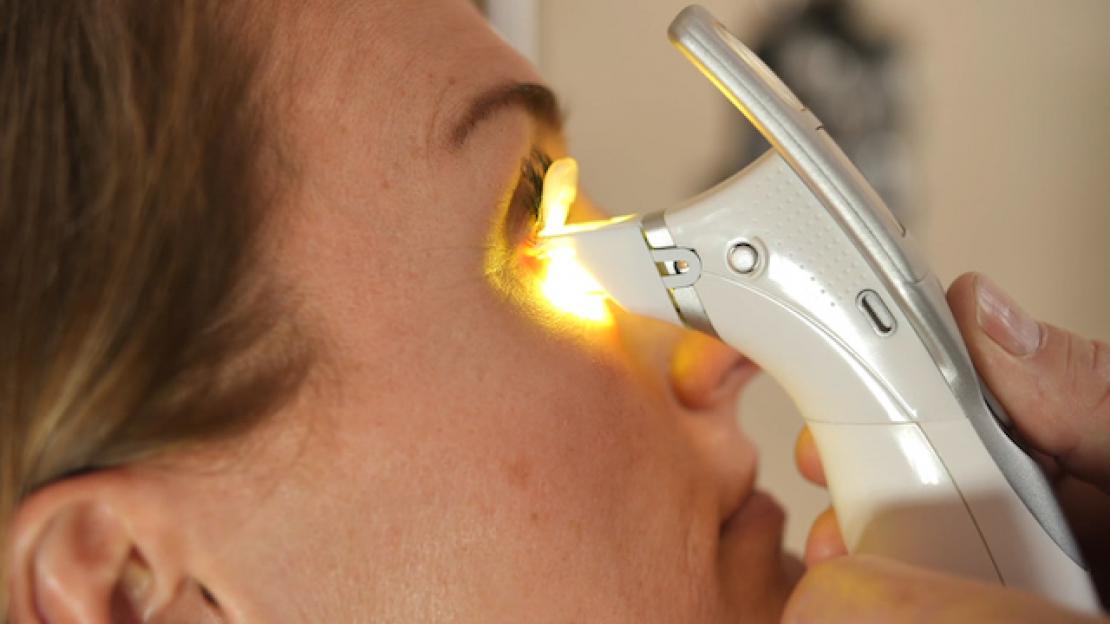
When you think of dry eye disease, you should also think of your tear film. Your tear film is at the center of your eye comfort—it hydrates and soothes your eyes while also protecting them from bacteria with the help of multiple unique ingredients. One of these ingredients is oil produced by your meibomian glands, […]
IPL vs. Lipiflow: What’s the Difference?

Different Dry Eye Remedies For Certain Conditions Dry eye disease is an uncomfortable and often chronic condition affecting many people in the Pacific Northwest. Thankfully, there are ways we can slow the progression of the disease and alleviate symptoms of dry eyes. Using innovative technology like intense pulsed light (IPL) and Lipiflow can help treat […]
What is Myopia Management?
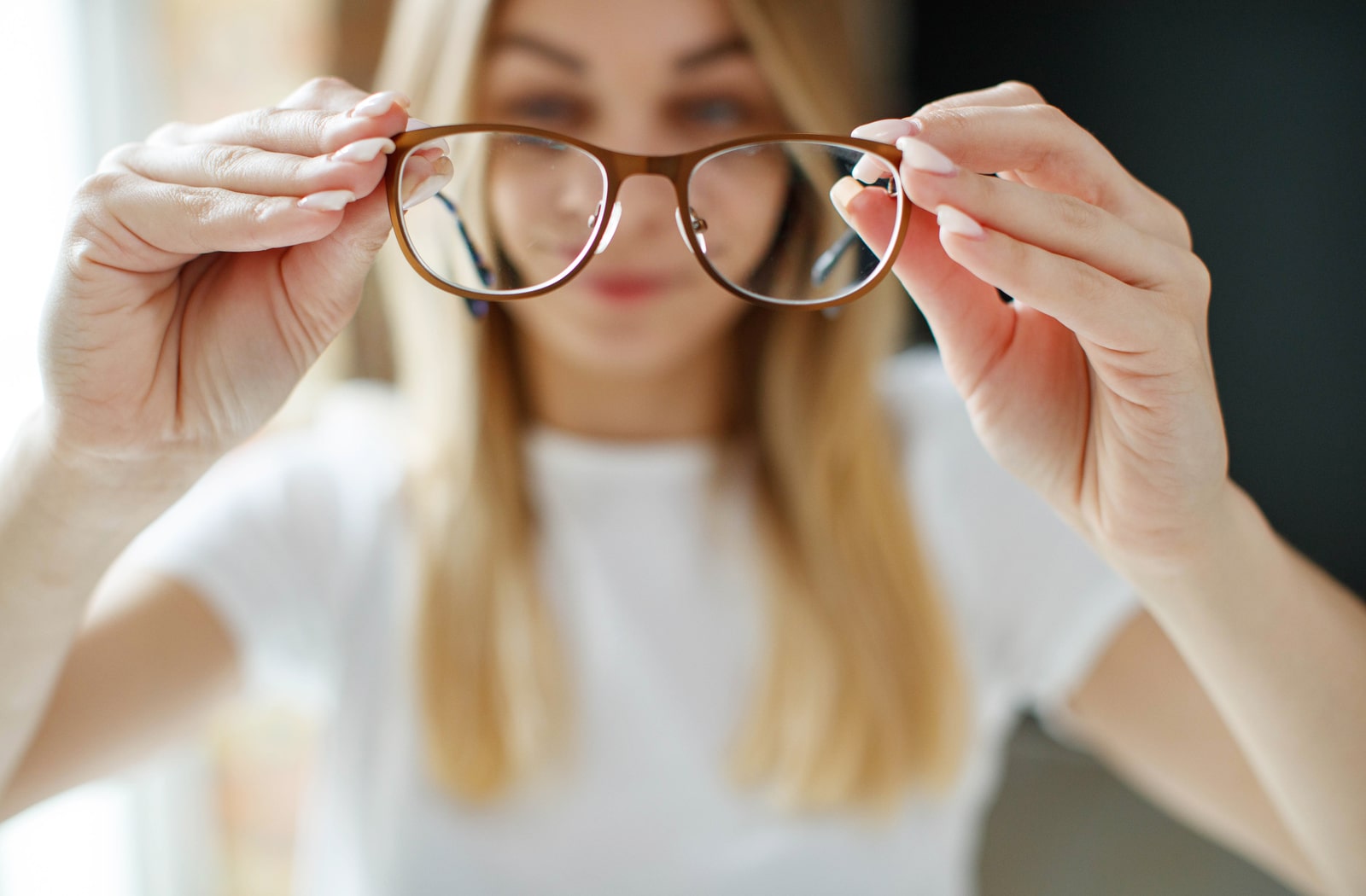
Myopia, also known as nearsightedness, affects the ability to see objects in the distance clearly. It typically begins at a young age and often progresses into adulthood. Routine eye exams are capable of diagnosing this issue, and early intervention can prevent it from progressing into more severe vision issues, like high myopia. Myopia management, or […]





